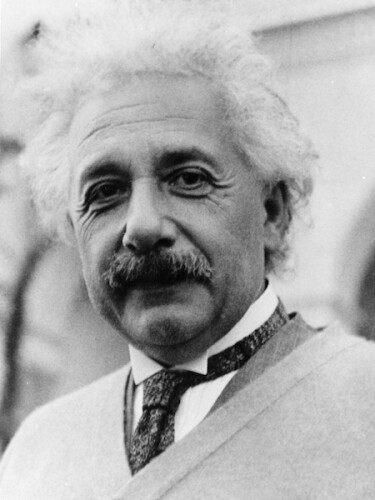Albert Einstein
DOI: 10.1063/PT.5.031434

Born on 14 March 1879 in Ulm, Germany, Albert Einstein was the most impactful physicist of the 20th century. He received a bachelor’s degree from Swiss Federal Polytechnic in 1900 and a PhD from the University of Zurich in 1905. Einstein’s career famously began at a patent office in Bern, Switzerland, where he had time to ponder big questions in physics after reviewing patent applications. In what’s become known as Einstein’s “miracle year” of 1905, he described the atomic underpinnings of Brownian motion, introduced special relativity and the equation E = mc2, and applied quantum theory to explain the photoelectric effect. It was the latter discovery, not his work on relativity, that earned him his one and only Nobel Prize in Physics
In 1933 Einstein, whose parents were Jewish, fled Nazi Germany and settled in Princeton, New Jersey, to become a resident scholar at the Institute for Advanced Study. He became a US citizen in 1940. He was never asked to join the Manhattan Project, where physicists applied Einstein’s most famous equation to create the world’s most devastating weapon. Einstein opposed the development of the hydrogen bomb and cofounded the Emergency Committee of Atomic Scientists to prevent the spread of nuclear weapons. He also actively supported the civil rights of African Americans and the development of a Jewish state.
Einstein’s later years were spent examining quantum mechanics and trying to merge it with general relativity to formulate a unified field theory. His most cited paper, which he coauthored with Nathan Rosen and Boris Podolsky in 1935, describes the counterintuitive behavior of particles that share a strange connection, one that Erwin Schrödinger would soon name quantum entanglement.
Einstein died of an aneurysm in 1955 at age 76. To commemorate what would have been his 100th birthday, Physics Today published several articles and a photo essay in its March 1979 issue, which you can read here
Date in History: 14 March 1879